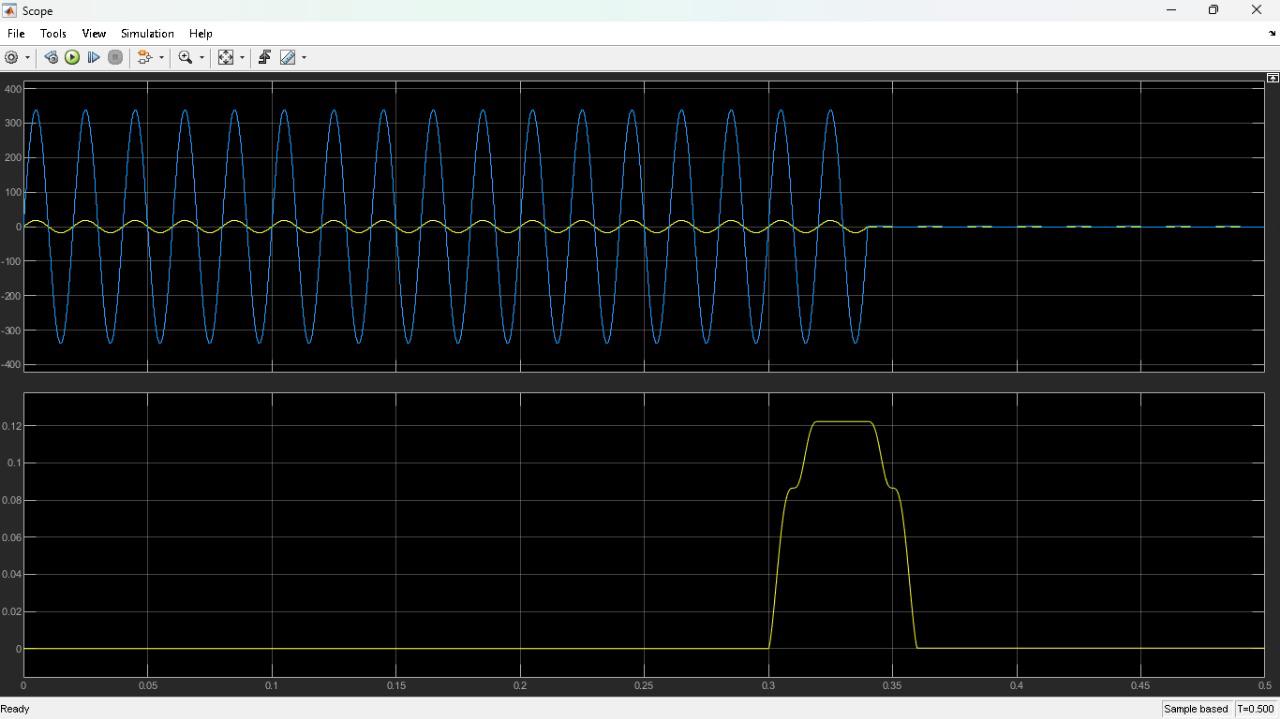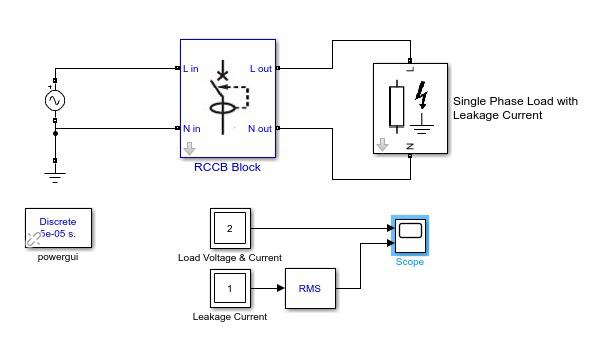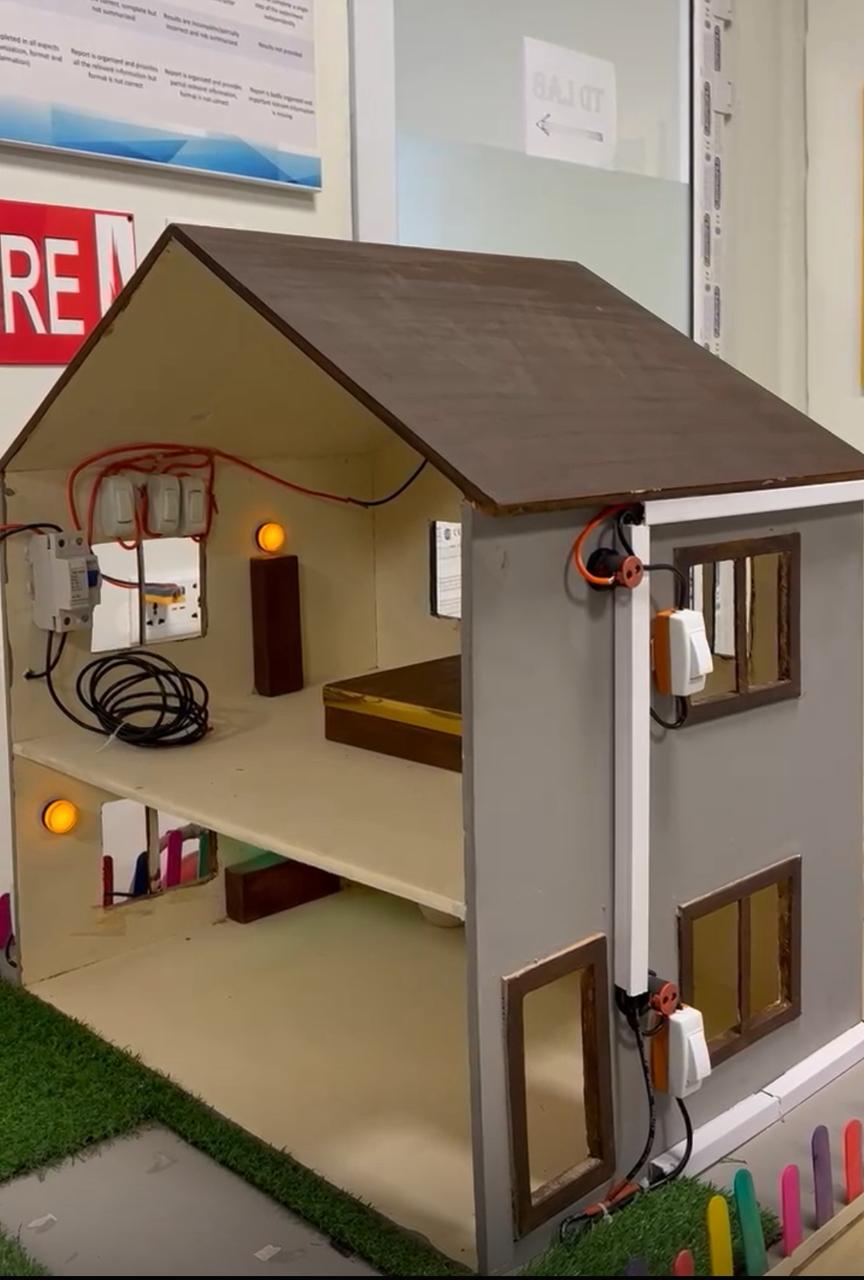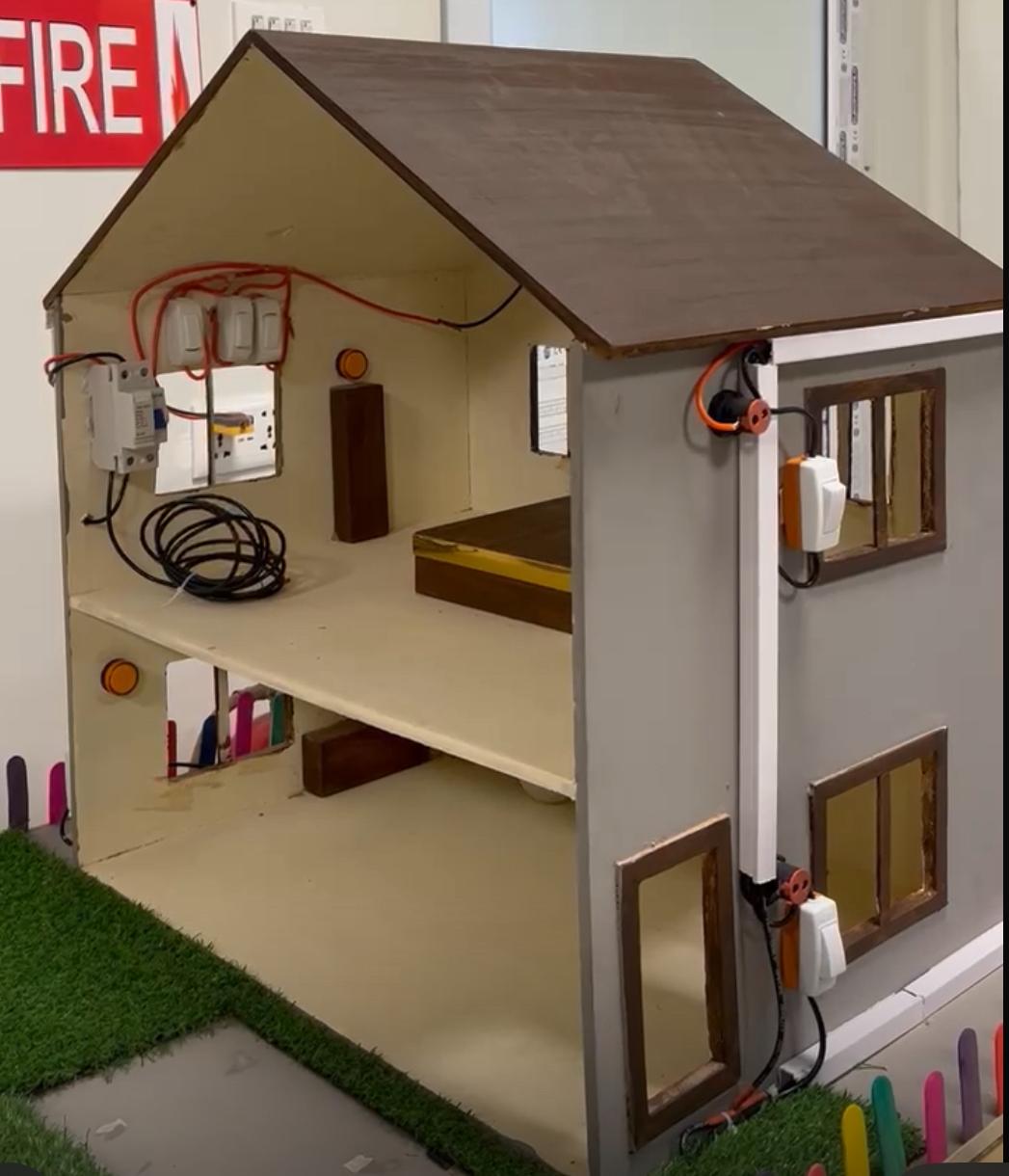Objectives
The primary objective of this project is to design, implement, and evaluate a robust and intelligent residential protection system that utilizes a Residual Current Circuit Breaker (RCCB) to provide effective protection in ungrounded household electrical networks. This project addresses the growing need for electrical safety in low-voltage residential infrastructures where conventional earthing systems are either inefficient, expensive, or altogether absent due to geographic or economic constraints. The ungrounded nature of these systems makes them vulnerable to insulation failures, leakage currents, fire hazards, and human electric shock. Therefore, integrating RCCB as a core component provides an essential layer of safety by detecting leakage currents and immediately interrupting the circuit to prevent any harm.
The core focus of the project lies in exploring the arc-extinguishing capabilities, operational reliability, and response time of the RCCB under various fault scenarios. This protection strategy does not rely on grounding and thus presents an ideal solution for temporary shelters, low-income housing projects, or areas with poor soil conductivity. The project aims to simulate the real-time behavior of the RCCB under fault conditions and quantify its performance parameters, such as leakage sensitivity (typically 30mA), trip time (within 300ms), and current-breaking capacity, through MATLAB-based simulations.
Moreover, the project involves constructing a prototype residential electrical layout using LED lighting, basic wiring, and a 2-pole 30mA RCCB integrated into a simulated distribution box. This prototype demonstrates the practical viability and economic affordability of deploying RCCBs in low-scale residential environments. The overall design is simple, scalable, and cost-efficient, ensuring that the safety system can be adopted in both urban and rural applications.
Through this project, we intend to:
Enhance electrical safety standards in ungrounded or poorly grounded households.
Demonstrate the effectiveness of RCCB in detecting earth leakage currents and preventing electrical hazards.
Evaluate the behavior of RCCB under different simulated fault conditions using MATLAB.
Reduce the dependency on conventional earthing, which may be expensive or impractical in some settings.
Provide a practical, affordable, and replicable solution for emerging economies and temporary housing units.
Promote the implementation of standardized protection devices in accordance with international safety standards (e.g., IEC 61008).
Ultimately, the project contributes to raising awareness about modern electrical protection techniques and advocates for the integration of RCCBs in standard building practices, ensuring safety, reliability, and compliance with sustainable development goals related to energy access and infrastructure safety.
Socio-Economic Benefit
The implementation of an RCCB (Residual Current Circuit Breaker) in an ungrounded residential power system delivers significant socio-economic advantages, particularly for developing communities and areas with weak electrical infrastructure. This project not only enhances electrical safety but also promotes cost-effectiveness, public health, and sustainable development.
1. Improved Electrical Safety
The core purpose of this project is to reduce life-threatening electrical incidents such as shocks, electrocutions, and fires caused by leakage currents. By automatically disconnecting power in the event of current leakage, the RCCB ensures a high level of protection in systems lacking proper earthing. This directly translates into fewer injuries, fatalities, and property damage in residential settings.
2. Cost-Efficiency and Accessibility
The system is designed using affordable components like a 2-pole, 30mA RCCB, basic wiring, and standard household fixtures. This allows even low-income households to adopt electrical safety without incurring high costs. Its economic design reduces long-term healthcare costs due to electrical injuries and minimizes fire-related losses.
3. Applicability in Underserved Areas
Many rural and peri-urban regions operate with insufficient or no grounding infrastructure. This project offers an effective solution for such areas by providing a ground-independent protection system. It is particularly useful for temporary housing, rural schools, clinics, and disaster-relief shelters, where electrical hazards are often overlooked due to budget constraints.
4. Employment and Skill Development
The widespread deployment of RCCB-based protection systems can stimulate demand for trained electricians, technicians, and local hardware suppliers. Additionally, the project opens opportunities for vocational training and capacity-building initiatives that teach safe installation and maintenance of protective electrical systems.
5. Alignment with Sustainable Development Goals (SDGs)
This initiative supports UN SDG 7 (Affordable and Clean Energy) by improving access to safe and modern energy systems. It also supports SDG 11 (Sustainable Cities and Communities) by reducing the risks associated with unsafe residential electrification and promoting resilient infrastructure. The project’s low-cost, sustainable design aligns with the broader goals of responsible consumption and inclusive development.
6. Promoting Awareness and Responsible Use
Through its implementation, the project encourages awareness about electrical safety and responsible energy usage. Users become more conscious of protection devices and the importance of regular maintenance, promoting a culture of safety and sustainability.
Methodologies
The methodology adopted in this project is a blend of theoretical design, hardware prototyping, and simulation-based validation. It is divided into the following systematic phases:
1. Problem Identification and Requirement Analysis
Conducted a detailed study of residential electrical safety systems, particularly in areas where proper grounding is absent.
Identified the limitations of conventional circuit breakers in ungrounded setups.
Defined the core objective: to test and validate the effectiveness of Residual Current Circuit Breakers (RCCBs) in preventing leakage current hazards in ungrounded systems.
2. System Design and Planning
Designed a miniature house prototype using plywood to replicate a real-life ungrounded domestic wiring layout.
Selected appropriate components, such as:
RCCB (2-pole, 30mA, 240V)
Wiring setup
Load devices (LED lights)
Created a block diagram and functional architecture representing the electrical layout with an RCCB integrated in series.
3. Component Selection and Procurement
Procured hardware components required for the testbed including RCCB, wiring, LEDs, switches, connectors, and breakers.
Ensured compatibility of components for a low-voltage prototype simulation.
4. Implementation and Prototyping
Assembled the physical prototype with a complete residential-style wiring layout.
Installed RCCB and ensured proper load distribution to mimic household power consumption.
Conducted controlled tests by creating simulated leakage conditions to observe RCCB performance.
5. Simulation and Software Analysis
Developed simulation models using MATLAB/Simulink to validate hardware findings under varying load and leakage conditions.
Compared RCCB behavior with other breakers (MCB, ELCB, RCBO) to highlight the advantages in leakage detection and disconnection time.
Analyzed time-current characteristics and plotted graphs to visualize performance under different scenarios.
6. Testing and Evaluation
Evaluated system behavior under normal and fault conditions (e.g., live-to-ground faults, neutral leakage).
Validated RCCB's fast response and efficiency in isolating faulty circuits, especially in absence of grounding.
Compared theoretical and simulation results to ensure coherence.
7. Documentation and Result Compilation
Recorded all findings, graphs, and safety test results.
Compiled comprehensive documentation including case studies, cost analysis, and socio-economic implications.
8. Conclusion and Future Enhancements
Concluded the viability of RCCB usage in ungrounded systems for enhanced safety.
Proposed future integrations with IoT-based monitoring and wireless fault reporting systems.
Outcome
The primary outcome of this project is a validated, cost-effective, and reliable electrical safety solution using an RCCB (Residual Current Circuit Breaker) in a residential environment lacking proper earthing (grounding). This solution demonstrates the feasibility of enhancing user safety even in ungrounded systems—common in many underdeveloped or rural areas.
Key Outcomes Include:
Successful Hardware Prototype:
A scaled residential model with integrated RCCB protection was developed and tested.
Leakage current faults were simulated, and RCCB performance was observed in real-time.
RCCB successfully disconnected power in under a second during fault conditions, preventing potential hazards.
Simulation Validation:
MATLAB/Simulink simulations confirmed the real-world behavior of the RCCB.
Comparative performance was measured against other protection devices (e.g., MCB, ELCB), with RCCB performing best in leakage detection without requiring a ground.
Enhanced Electrical Safety for Ungrounded Systems:
Demonstrated the viability of using RCCBs in homes lacking grounding—improving protection against electric shocks and fire hazards due to leakage.
Cost-Efficient Implementation:
Total cost was maintained under Rs. 80,000, proving affordability for middle-income households.
Component breakdown and availability showed the system is easily deployable.
Educational and Practical Value:
The project provides a reference model for students, educators, and electrical professionals interested in safe domestic power systems.
Supports SDG goals related to sustainable cities and infrastructure safety.
This outcome contributes to the development of safer electrical installations, especially in communities where grounding is absent or impractical, without requiring high-end technology or expensive modifications.











